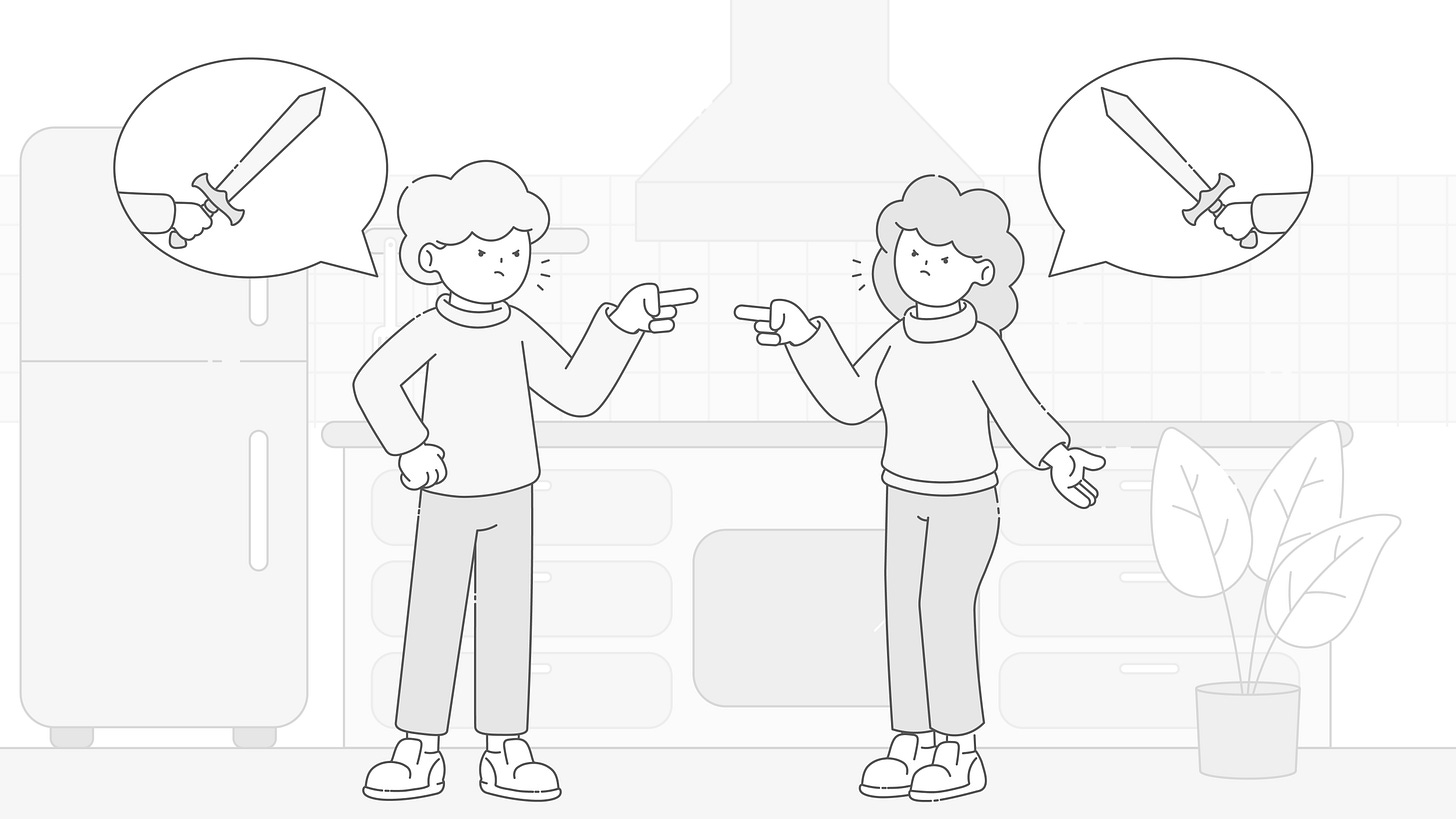Dialogue Is Not About What The Reader Should Learn
It's About How Your Characters Mis-hear, Misdirect, and Miss Out Entirely
Writers always get told that dialogue should be “realistic.” Let’s unpack that advice and dig out the gold that’s hiding within.
Realistic dialogue sounds natural, yes.
But it’s also complex, multilayered, and subtle, just like our everyday speech.
The best dialogue isn’t just characters trading information like a couple of AI chatbots.
Each character enters the conversation with a specific mood, an agenda, a filter of hopes and doubts and fears through which they see the world, time constraints, worries, and so on.
All that baggage shapes the way they talk, the words they choose, what they hear and what they make of it. In short, every aspect of communication.
Realistic dialogue can have:
People talking past each other
Listening selectively
Avoiding what they really want to say
Over-sharing
Using words as tools, shields, weapons, distractions
Understanding what they want to understand
Because that’s how people speak in real life, too.
People Don’t Speak in Facts, They Speak in Filters
Here’s something to tattoo on the inside of your writing brain:
Every character walks into a conversation with a motive.
Every character brings a mindset.
No two people are in the same headspace.
So even when they’re “just talking,” they might actually be…
Misunderstanding each other
Assuming they already know what the other means
Projecting guilt, desire, fear, hope, or grief
Hearing what they want to hear or expect to hear
That’s frustrating as hell to live through, but great to write. And that’s where brainloads of beautiful tension and conflict are waiting to spill out.
A Quick Example
Let’s say we have two characters: Nia, who’s grieving her mother, and Callum, her coworker and shy friend, who has no idea what to say. They're leaving the office after a long day.
Here’s how clumsy dialogue could handle it:
Callum: How are you holding up?
Nia: I’m too tired to talk about it. I just want to go home and sleep.
Callum: I wish I could help.
And yes, that’s dialogue. But it’s the obvious dialogue. It’s what the writer wants the reader to know.
Real people usually approach the subject at an angle, like this:
Callum: You working tomorrow?
Nia: Yeah. I need the distraction.
After a moment, Callum bumps his shoulder against hers.
That’s it. No drama, no big moment. Just a pure moment between two friends that reads much more genuine and realistic. You can feel the presence of grief, walking between them.
It’s not flashy, but it’s real, and it makes the scene linger.
Why This Works
Realistic dialogue…
✅ Makes conversations feel charged, not flat
✅ Reveals character without exposition
✅ Creates opportunities for conflict, tension, and irony
✅ Keeps the reader actively interpreting
And best of all? You don’t have to make anyone shout or cry or confess. Just let them be themselves together.
A Prompt to Try
Pick a simple exchange between two characters in your WIP.
Now ask:
What does each of them want to achieve in this scene?
What emotional filter are they bringing in?
What assumptions do they make—right or wrong?
Then rewrite the dialogue so that:
Each line has its own agenda
No one is fully listening, because everyone is intent on their own agenda.
Suddenly, the subtext starts to sizzle beneath the surface, and the scene comes to life.
If this post lit up your writer brain, hit the ❤️ and share it with another dialogue nerd in your circle.
Because what’s not said always speaks the loudest.
Until next week,
Tal Kilim



